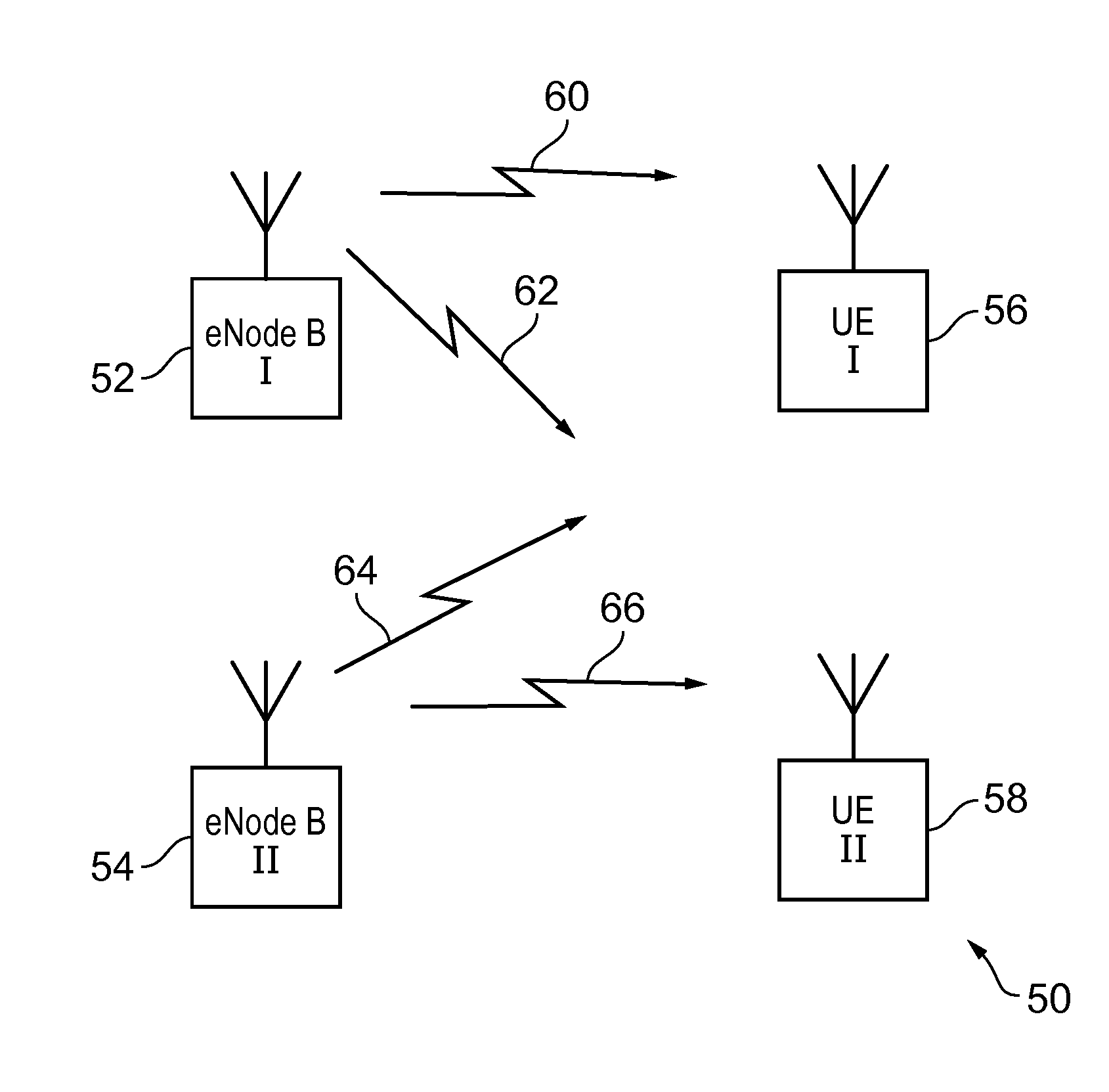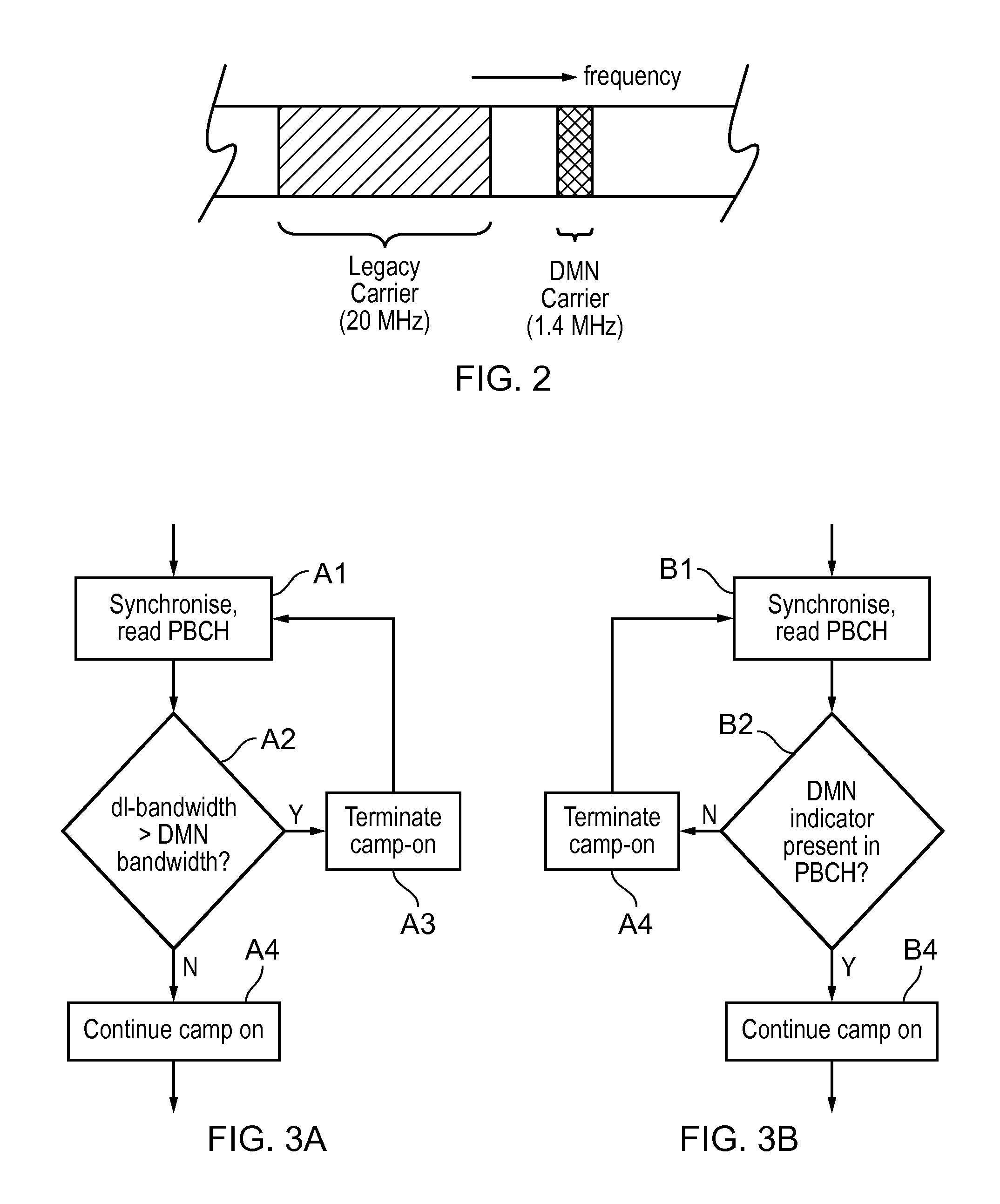Method and apparatus for controlling carrier selection in wireless communications systems
a wireless communication system and carrier selection technology, applied in the field of wireless communication systems, can solve the problems of more complex and expensive radio transceivers to implemen
- Summary
- Abstract
- Description
- Claims
- Application Information
AI Technical Summary
Benefits of technology
Problems solved by technology
Method used
Image
Examples
Embodiment Construction
[0028]As indicated above, there is a drive to provide radio network architectures that allow for the operation of a class of devices which may not be provided with the full operating functionality required for full compliance with a relevant operating standard of a radio network. By way of example, mobile user equipment that is fully compliant with the current LTE standards are required to support a radio bandwidth of 20 MHz. Radio resources may be allocated to the mobile user equipment across this entire bandwidth and so the mobile user equipment includes a transceiver able to operate across this full range. However, the present inventors have recognized there can be classes of device, such as MTC devices, that do not require such broadband capability, and as such could be made cheaper if they could be provided with a reduced bandwidth transceiver while still being accommodated in the network.
[0029]One way to achieve this interoperability would be to provide different carriers for ...
PUM
 Login to View More
Login to View More Abstract
Description
Claims
Application Information
 Login to View More
Login to View More - R&D
- Intellectual Property
- Life Sciences
- Materials
- Tech Scout
- Unparalleled Data Quality
- Higher Quality Content
- 60% Fewer Hallucinations
Browse by: Latest US Patents, China's latest patents, Technical Efficacy Thesaurus, Application Domain, Technology Topic, Popular Technical Reports.
© 2025 PatSnap. All rights reserved.Legal|Privacy policy|Modern Slavery Act Transparency Statement|Sitemap|About US| Contact US: help@patsnap.com



